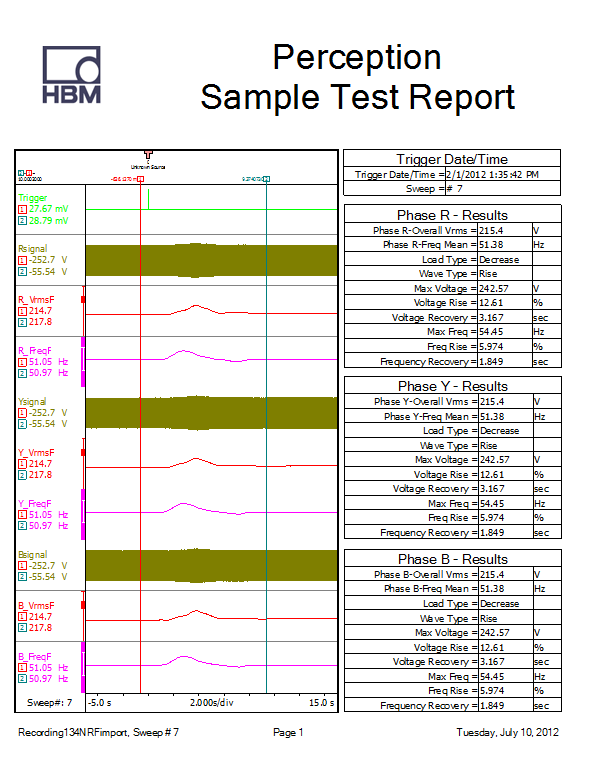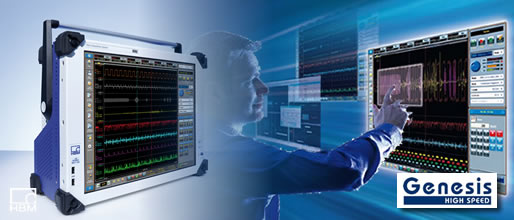Demands on data acquisition equipment
The data acquisition equipment had to be capable of continuously recording three-phase voltages of 50/60 Hz and up to 480 Vrms plus five K-type thermocouples and other miscellaneous signals - each less than 10 volts. The equipment also needed to calculate a wide range of performance criteria, including the Vrms and frequency trend waveforms for all three phases, maximum and minimum voltage and frequency values, percent change in voltage and frequency and the voltage and frequency recovery time for every load change; these occur roughly every 40 seconds.
To meet these exacting demands HBM provided its GEN2i Genesis HighSpeed eight-channel, 200 kS/s data acquisition system. Additional equipment included three 25 MS/s high-voltage fiber-optic isolated digitizers, providing a virtually infinite isolation barrier, with an associated fiber-optic receiver card and high voltage probes.
Analysis and reporting of a generator’s performance is provided by HBM’s Perception software using the integrated formula database to generate the needed analysis algorithms. On-site training for Cummins’ staff was also provided by HBM.



